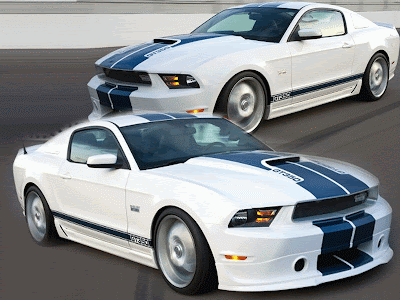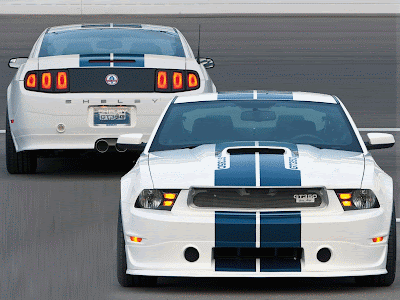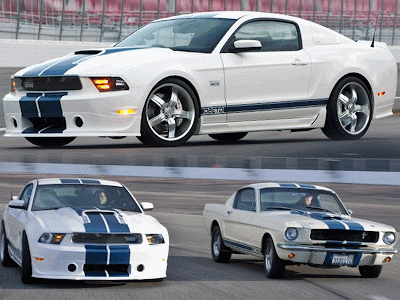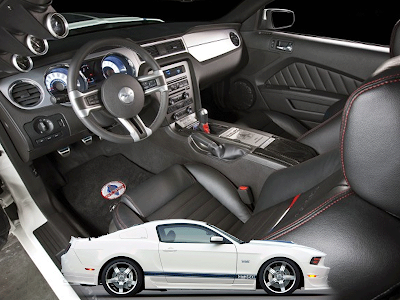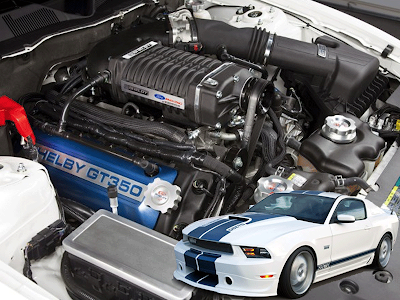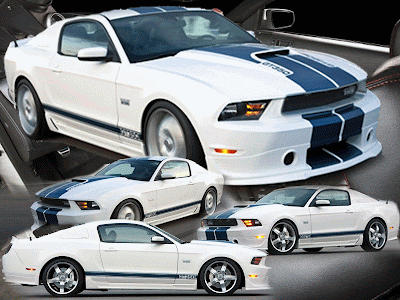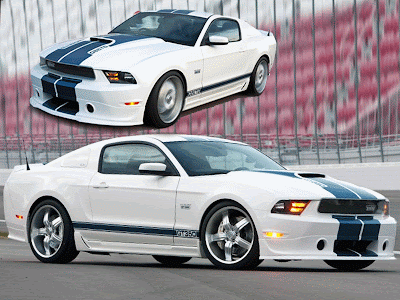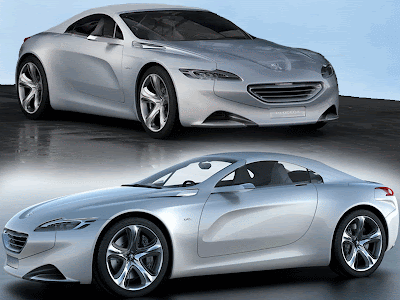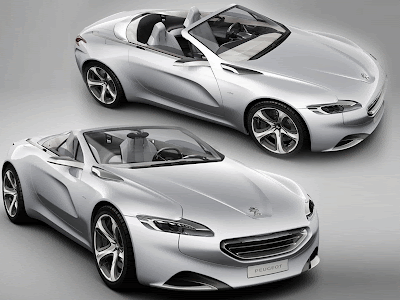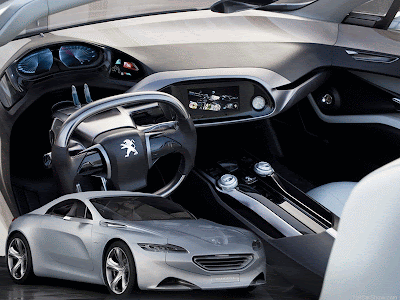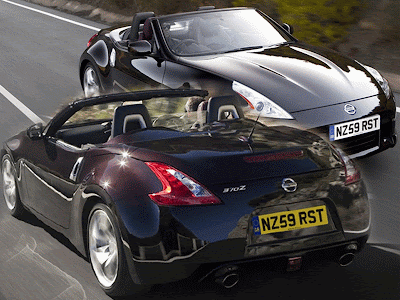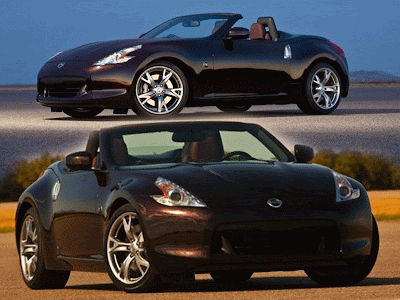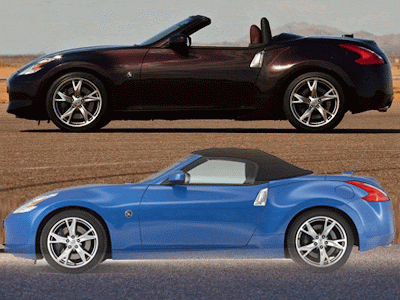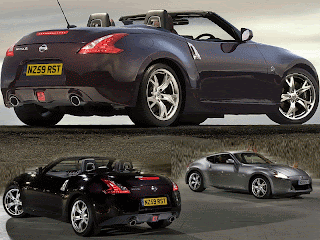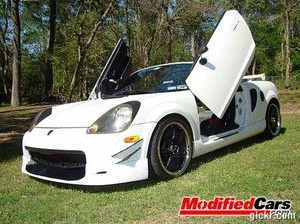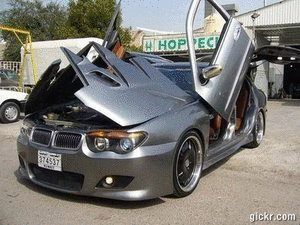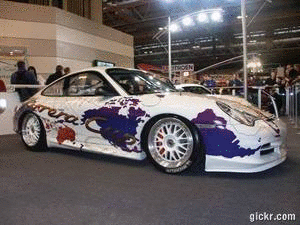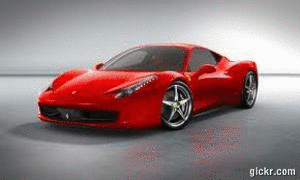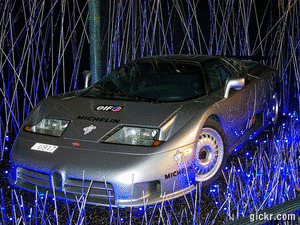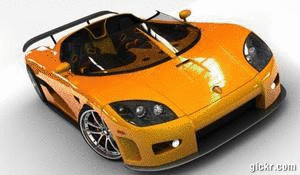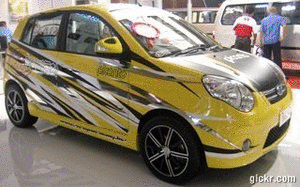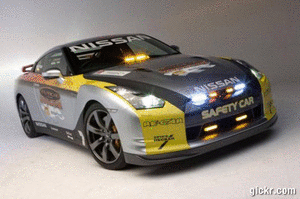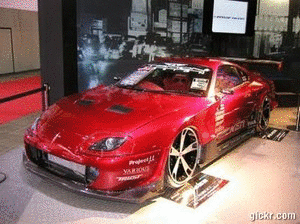
That sentiment was driven home during India’s Auto Expo 2010, held in New Delhi January 5-11. With
2,100 exhibitors and 25 new models on display, the event drew more
than two million visitors
In December 2009, the Indian automobile industry stepped on the gas. Sales of passenger cars were up a whopping 40.27 per cent, from 82,174 units (in December 2008) to 115,268 units, according to data released by the Society of Indian Automobile Manufacturers (SIAM). Add sales of two-wheelers (up 77 per cent) and commercial vehicles (up 172 per cent) to this number, and overall vehicle sales saw a 67.5 per cent jump. “The Indian auto industry has been the showcase of the resurgence of the Indian economy,” says Pawan Goenka, president of SIAM.
That sentiment was driven home during India’s Auto Expo 2010, held in New Delhi January 5-11. With 2,100 exhibitors and 25 new models on display, the event — now in its 10th year — drew more than two million visitors. On the second-to-last day, police had to stop music shows and public performances at the Expo as the crowds had become unmanageable. “It is clear that the Auto Expo is rapidly emerging as one of the key events of the global auto industry,” Jyotiraditya Scindia, union minister of state for commerce and industry, said at the closing event.
“The wide participation, the impressive line-up of cars for India, the rather quick launch of variants into India with very little gestation time in other markets, and the not-so-conservative price tags are all indicative of a market [undergoing change],” says Harish Bijoor, brand-strategy specialist & CEO, Harish Bijoor Consults, and a member of the faculty at the Hyderabad-based Indian School of Business. “The India story of a 7.9 per cent year-on-year GDP growth has been taken seriously.” Sandeepan Banerjee, project leader (auto & engineering), Tata Strategic Management Group (TSMG), agrees: “The huge participation in the Auto Expo is a metaphor for India’s GDP growth and, most importantly, its consumption growth.”
Despite the turnout and media attention, some observers question the degree to which the size and success of the Auto Expo can be considered to represent the health of India’s auto industry — and by extension, the country’s economy. Moreover, they say, many of the models introduced at the Expo have more to do with Western automakers’ ideas about Indian consumers than on-the-ground realities.
Small Cars are Big
The big thing at Auto Expo 2010 was the small car. Two years ago, Tata Motors chief Ratan Tata had wowed the crowds at the same venue with the $2,000 Nano. This year, Japanese automaker Toyota unveiled the Etios, which will be priced below $10,000, and Honda had an offering dubbed the “New Small Concept.” The latter, which will be built with 80 per cent local components, will be on the roads in 2011 and will also be in the $10,000 range. Suzuki announced it was revamping some of the models of its Indian subsidiary Maruti Suzuki. Italian auto group Fiat said it was developing a small car along with its joint venture partner, the Tata Group. General Motors (GM) launched the Chevrolet Beat. Volkswagen unveiled the Polo, which will be available beginning in March. Even Ratan Tata had a new small car to show — a modified Nano for the US market.
“The Auto Expo underscored two key trends,” says Banerjee. “First is the importance of small cars: India is essentially a compact car market. It is also a good base for manufacturing such small cars profitably and exporting them worldwide. Hyundai has shown the way for the past couple of years, and Maruti has joined the bandwagon. Hence, global manufacturers are making a beeline for unveiling small cars for the Indian and emerging markets.” The second, he notes, “is the development of 16- to 49-ton trucks. With increasing focus on road infrastructure, scale of operations and maturity of fleet operators, this segment is expected to give huge growth opportunities. Domestic manufacturers have responded splendidly by launching multiple products at the Auto Expo. Also, global players have displayed their expanded portfolio offerings to cater to Indian demand.”
According to Bijoor, the major trend at the Auto Expo was “the ‘small big car’ for India — small cars that are loaded with features and priced high. Apart from this, [the rest was] clutter ... of brands, of variants, of features and of bells and whistles.”
Still, while small and economical seemed to be the order of the day, none of the automakers had offerings priced as low as the groundbreaking Nano; instead, the average price for their models is around $10,000. And luxury brands were not totally eclipsed, either: German major Mercedes Benz showcased two cars — the Desert Gold, priced at $500,000. It also launched a multi-axle luxury bus, priced at $184,000. BMW, which has recently overtaken Mercedes in the Indian luxury car market, launched the X6 M, the 760 Li and the Gran Turismo — all priced higher than $200,000. Audi showcased its Sportback Concept and the A7 ($120,000). Market leader Maruti launched the luxury Suzuki Kizashi. Even Tata showcased the $85,000 Jaguar XJ.
“The Indian luxury car market will double in five years,” Peter Kronschnabl, president of BMW India, told journalists at the Auto Expo. That may not amount to much, however: Total annual sales of top-end vehicles number only about 9,000 in India.
Western Mentality on Display
According to some industry observers, part of the problem with high-priced vehicles like those on display at the expo is that they are not tailored to the Indian market. “Western manufacturers have not understood the Indian mentality,” says Shombit Sengupta, international creative business strategy consultant and chairman of Shining Consulting. “Sophisticated auto companies think Indians who have money will flaunt it.” But Indian consumers — even wealthy ones — have other considerations when it comes to selecting a vehicle, he notes. For example, “in developed countries, the [luxury] car was designed for the pleasure of a long drive. But with India’s pathetic infrastructure, this charm does not exist.”
Some of the other pricey offerings at the Auto Expo seem to underscore Sengupta’s sentiments. Harley-Davidson India used the occasion to announce that it will bring 12 motorcycles from its 2010 model portfolio to India. On display was a custom-painted Harley-Davidson Fat Boy. These bikes will be priced between $15,000 and $77,000. For that price, a consumer could buy 37 Nanos and still have some change left. Another exhibit that has raised eyebrows is the Trek Equinox from Firefox, a bicycle that carries a $5,000 plus sticker price. (That’s more than two Nanos, if you do the math.)
“Western manufacturers are trying to implement Western success in India,” Sengupta says. “It will not work.” After World War II, he notes, vehicles were tailored to various cultures. Americans were attracted to large-sized, Hollywood-style cars. Italians had macho luxury vehicles as well as small cars to navigate the narrow cobbled streets of their ancient cities. Germans favoured sturdy, well-engineered cars. For the Japanese, quality was paramount. Today, only 3 per cent of the world’s automobiles are sold in India, he adds. “That’s why there is an opportunity to get huge volumes here. But nobody is thinking of what India wants.”
The Bolero, an SUV manufactured by home-grown automotive manufacturer Mahindra & Mahindra (M&M), is a vehicle that is right for India, Sengupta says. It can be used for both livelihood and lifestyle purposes. “It suits India’s rough roads, and it gives great mileage. It’s a value-for-money buy.” After dropping her husband off at the office, a wife could use the vehicle commercially as a school bus, for home delivery services or other purposes. “This way, [the family] can afford to pay the bank [installments] as well as enjoy the vehicle for family outings in the evening or on weekends.”
The Export Market
Meanwhile, some Indian manufacturers are taking the lead in modifying their own cars and trucks for international markets. The Tata Nano Europa was unveiled at the Geneva Auto Show last year. In commercial vehicles, M&M launched the MN 49 and MN 40 at the Delhi Expo. These trucks, the products of a joint venture with Navistar of the US, will be exported, too. Maruti Suzuki expects to export 20 per cent of its production this year, mainly the A-Star (the export version of the Alto) to Europe.
The export market is an area of increased focus for the government. From April to December of 2009, overall automobile exports grew by 10.45 per cent. The Automotive Mission Plan 2006-16, prepared by the Union Ministry of Heavy Industry, puts strong emphasis on exports. “The automotive industry genuinely believes it can become a world-beater,” says the document. The vision of the mission plan is “to emerge as the destination of choice in the world for design and manufacture of automobiles and auto components, with output reaching a level of $145 billion accounting for more than 10 per cent of GDP and providing additional employment to 25 million people by 2016.” According to advisory firm KPMG’s Global Auto Executive Survey 2010: Industry Concerns and Expectations to 2014, more than 50 per cent of auto company executives believe that India will export one million-plus vehicles in the next five years. According to SIAM, India exported 335,739 passenger vehicles and 42,673 commercial vehicles in 2008-09.
The KPMG survey predicts that green technology will be a big draw. That was also reflected at the Auto Expo: Toyota launched the Prius hybrid for the Indian market. It already has the Altis CNG, the Innova CNG and the Camry hybrid. Hyundai showcased the i10 Electric; it has already launched alternate-fuel vehicles such as the Santro LPG and CNG, the Accent LPG and CNG and the i10CNG. Maruti displayed its SX4 hybrid. GM offered a full selection of similar vehicles under the Chevrolet marquee — including the highly anticipated hybrid Volt, the Electric Spark (which operates on an all-electric drive train), the Aveo CNG and the well-established Spark LPG. “Hybrids, alternative fuel and low cost vehicles lead in all regions,” the KPMG survey notes.
According to driveinside.com, a web-based marketing services company, Tata Motors displayed 37 vehicles at this year’s Auto Expo (including Jaguar and Land Rover models), and it, too, picked up on the green theme. “Tata Motors chairman Ratan Tata said that the company is focused on meeting the full range of customer needs while being conscious of the environment,” the website reported.
Some Caveats
The Delhi Auto Expo was undoubtedly a grand show, but it is difficult to predict what its success means for the larger industry. “Don’t make a mistake about Indian crowds,” says Sengupta. “When [legendary soccer player Diego] Maradona came to Kolkata, the whole city became a traffic jam. [A high number of visitors at] the Auto Expo does not mean the auto market will flourish. Take the retail industry as an analogy: Retailers thought people would spend money in the big malls they created. But for the past nine years, no retailer has been making money. People throng the malls, enjoy the air-conditioned ambience on hot summer days, but they leave with no shopping bag in hand.”
There are other caveats to consider. The recent uptick in auto sales looks very positive, but it came on the back of a poor 2008-09 sales year. The global recession had an impact on several automobile categories, too. According to SIAM, domestic sales of passenger vehicles rose a meager 2,000 units in 2007-08. Commercial vehicles slumped from 490,494 to 384,122. Sales figures for three-wheelers also fell, while there was only a marginal increase in two-wheelers (around 70,000).
Also, industry observers note, the government’s recent stimulus plan has likely had a significant effect on the numbers. “[The government] chipped in at the right time with numerous incentives,” says Banerjee of TSMG. According to SIAM’s Goenka in an interview with the business daily Business Standard: “A combination of factors like the three fiscal stimulus packages, low interest rates on vehicle financing made possible by public sector banks, cash infusions from the 10th pay commission [a salary award for government servants] and new models from manufacturers have helped December sales to rise.”
Still, there is demand that helps to fuel the optimism: Union minister Scindia pointed out at the expo’s closing session that India has only nine cars per 1,000 persons, versus 27 per 1,000 in China. (The US has around 750 per 1,000.)
On the penultimate day of the exhibition, Delhi-based morning tabloid Mail Today reported: “More people visited the Auto Expo, leading to traffic snarls all over the capital. People were stuck in jams that stretched for hours on roads leading to the venue.” In the absence of adequate infrastructural development, what will happen, some may ask, when the automakers’ newest models are unleashed on the roads.
Knowledge @ Wharton is the online journal of the Wharton School at the University of Pennsylvania. It provides insight into some of the top business minds on issues ranging from finance and marketing to human resources and business ethics.
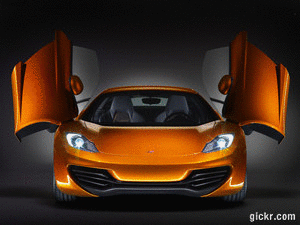

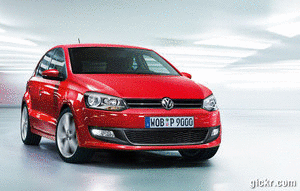
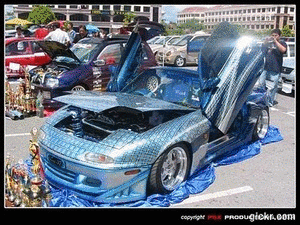

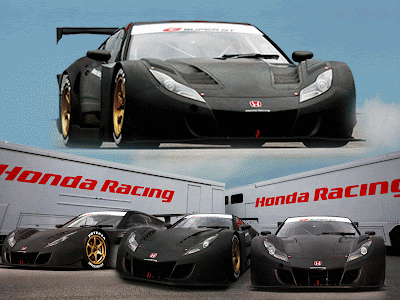

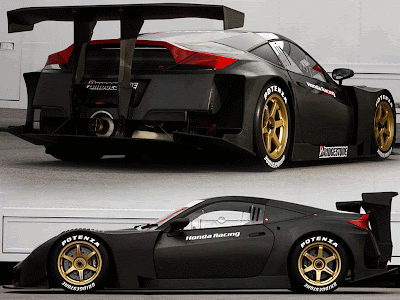
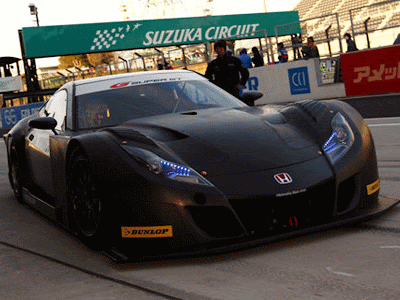

 Rencana pemerintah Indonesia untuk membuat sebuah mobil nasional sebenarnya bisa dilakukan dengan membuat sebuah mobil sederhana yang berharga murah sehingga mobil tersebut dapat diserap oleh para konsumen di daerah.
Rencana pemerintah Indonesia untuk membuat sebuah mobil nasional sebenarnya bisa dilakukan dengan membuat sebuah mobil sederhana yang berharga murah sehingga mobil tersebut dapat diserap oleh para konsumen di daerah. Maraknya mobil karya anak bangsa atau mobil nasional, jangan sampai membuat Indonesia terjebak dengan kesenangan buta belaka, kalau Indonesia sudah bisa menciptakan mobil nasionalnya sendiri.
Maraknya mobil karya anak bangsa atau mobil nasional, jangan sampai membuat Indonesia terjebak dengan kesenangan buta belaka, kalau Indonesia sudah bisa menciptakan mobil nasionalnya sendiri. Pekerja memeriksa final perakitan mobil buatan Cina di pabrik PT Gaya Motor, Jakarta, baru-baru ini. Mobil buatan Cina ini berkapasitas silinder 1.500 cc yang dipasarkan di Indonesia 13.369 dolar AS per unit.
Pekerja memeriksa final perakitan mobil buatan Cina di pabrik PT Gaya Motor, Jakarta, baru-baru ini. Mobil buatan Cina ini berkapasitas silinder 1.500 cc yang dipasarkan di Indonesia 13.369 dolar AS per unit.
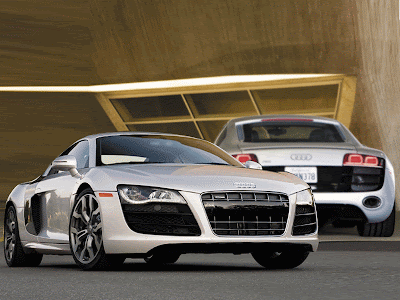
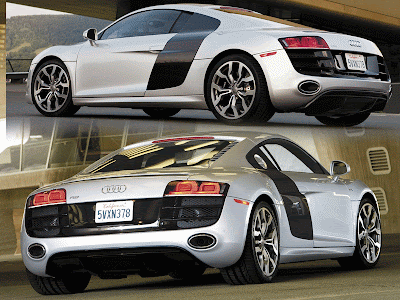
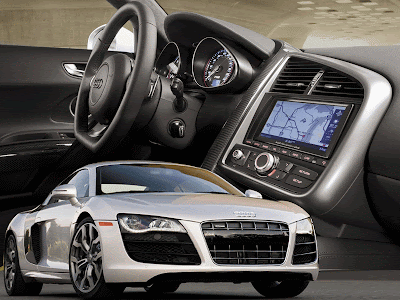
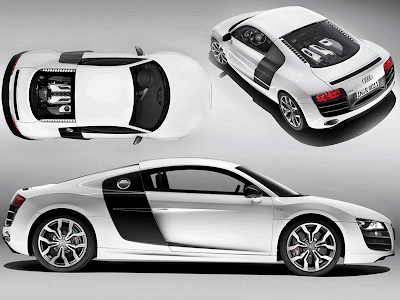
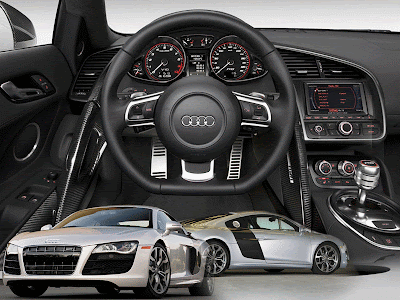
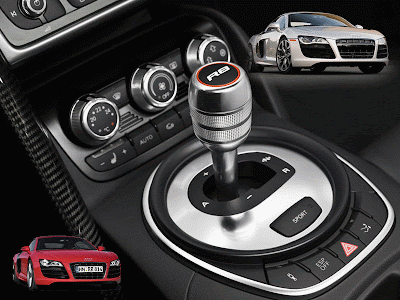
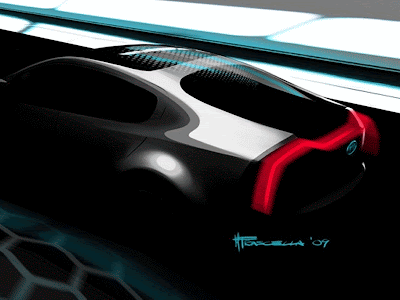
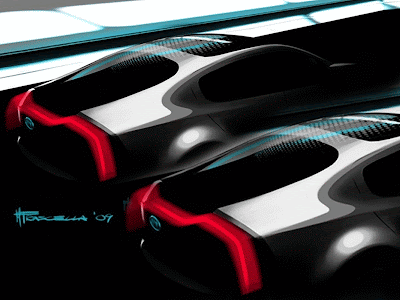


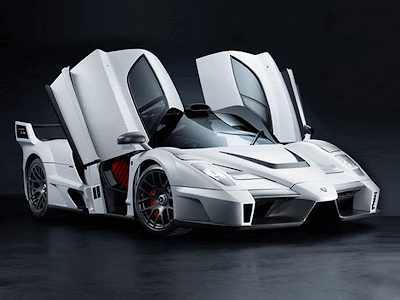
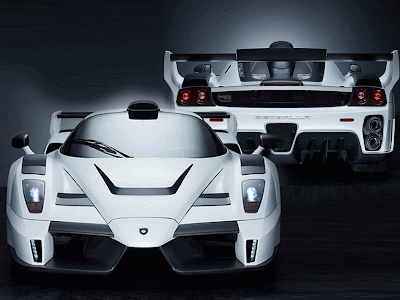
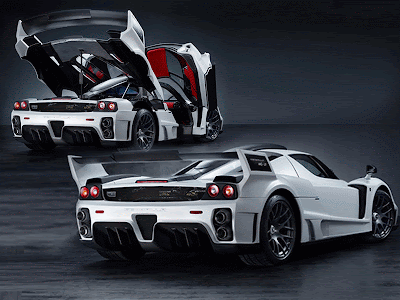
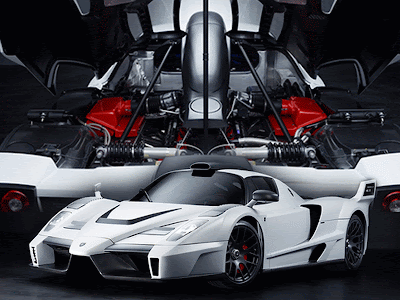
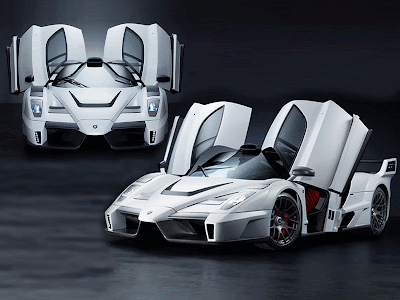
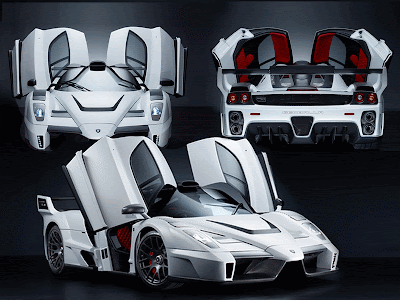
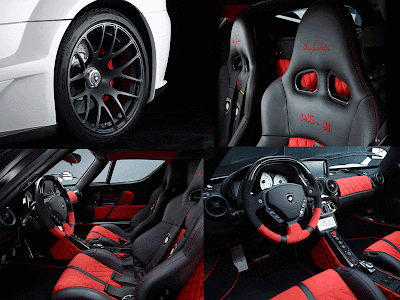
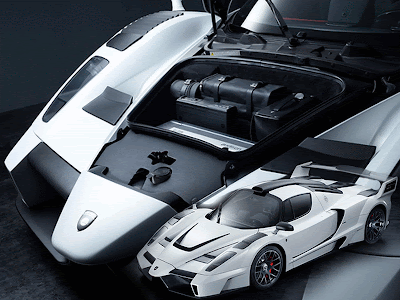
 That sentiment was driven home during India’s Auto Expo 2010, held in New Delhi January 5-11. With
2,100 exhibitors and 25 new models on display, the event drew more
than two million visitors
That sentiment was driven home during India’s Auto Expo 2010, held in New Delhi January 5-11. With
2,100 exhibitors and 25 new models on display, the event drew more
than two million visitors